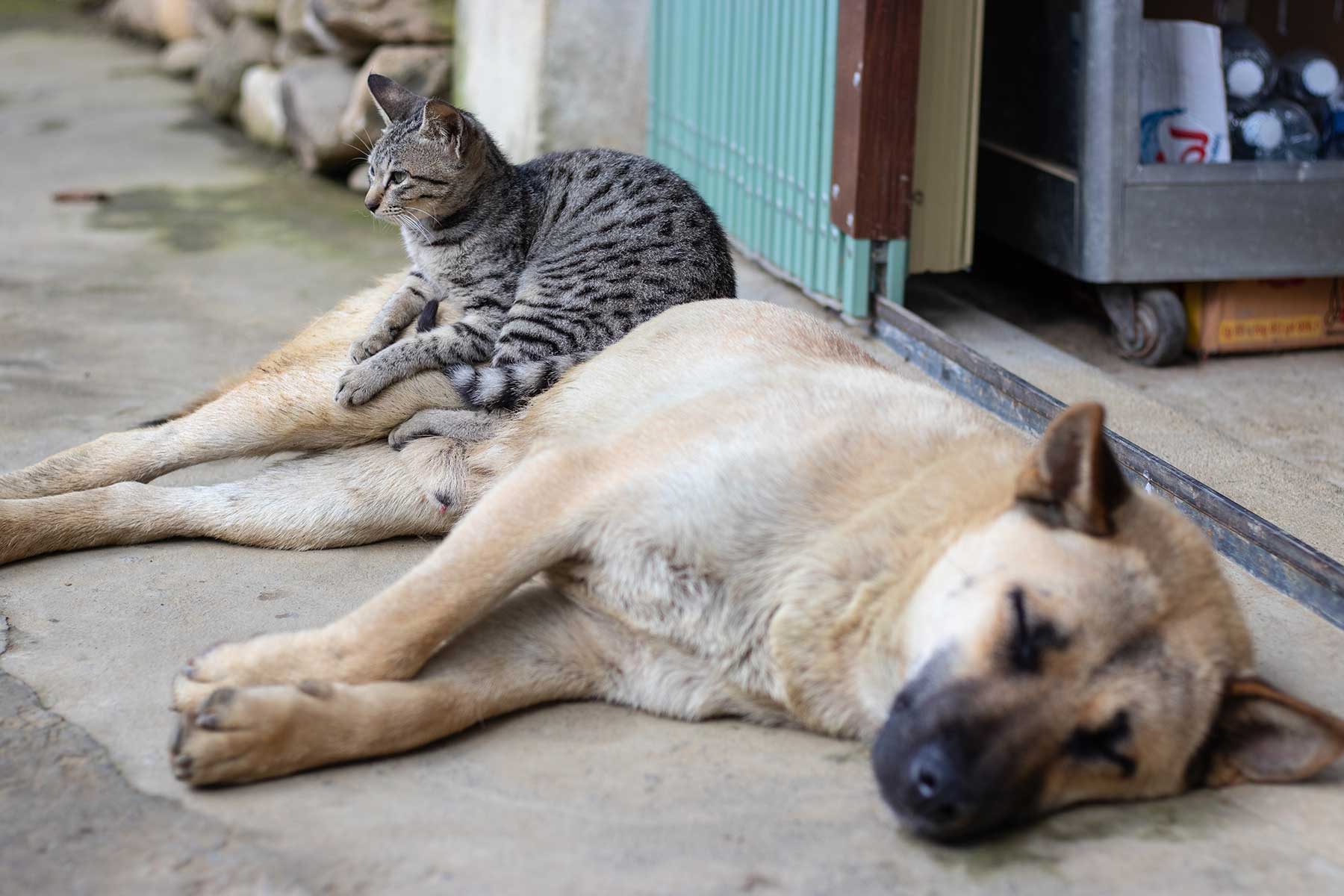Brachycephalic dogs such as Pugs, Bulldogs and Pekingese have been purposely bred to have pushed in or short faces. In the pursuit of this cosmetic appearance, a combination of compromising problems associated with redundant tissue in the airways means that these dogs are at risk of airway obstruction, heat stress, and even death.
The different aspects of the syndrome include:
- Stenotic nares: This is when the dog’s nostrils are severely narrowed leaving only a small opening. Surgery can be performed to widen the nostrils.
- Elongated soft palate: This is when the soft palate, which separates the nasal passage from the oral cavity, extends too far down the back of the throat, creating snorting and snoring sounds. Panting and excessive barking can result in swelling of the tissues in the throat which can worsen the obstruction. The soft palate can be surgically trimmed.
- Everted saccules: This is a secondary problem that occurs when a dog has had an increased effort in breathing over a period of time. The larynx has two small pockets called ventricles or saccules that will actually turn inside out due to negative pressure within the airways. When this occurs, the everted saccules need to be surgically snipped.
- Laryngeal collapse: This is another secondary problem in which the whole larynx collapses in response to prolonged and excessive negative pressure within the airway. This condition is very difficult to treat surgically, so it is important that owners are aware of their dog’s syndrome and have their dog’s airways assessed and operated on to prevent this from occurring.
- Tracheal stenosis: This is where the dog’s windpipe may be dangerously narrowed in places. This condition is life threatening and should be ruled out by chest radiographs prior to any surgical procedures.
Brachycephalic dogs are predisposed to heat stress as these upper respiratory obstructions cause the dog to pant inefficiently (panting is the cooling mechanism in the dog). These dogs are also at risk of the airways becoming inflammed and swollen from all of the extra work required to breathe. This leads to a more severe obstruction, distress, and further over-heating. Being overweight even further compromises the airways.
Not all dogs have all of the above problems, and it is important for owners to be aware of which condition(s) their pet has, and what conditions may be likely to develop, and what can be done to help.











